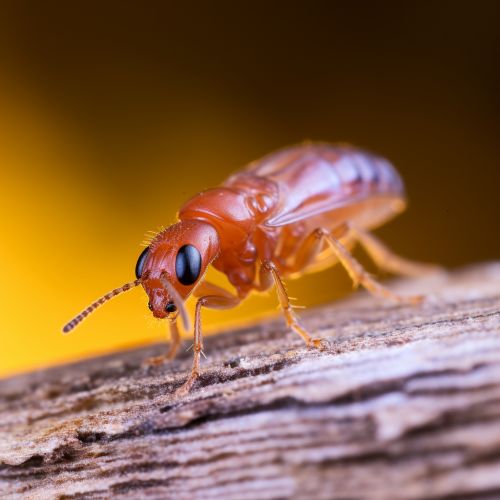Termites
Introduction
Termites are a group of eusocial insects that are classified at the taxonomic rank of infraorder Isoptera, or as epifamily Termitoidae within the cockroach order Blattodea. Termites were once classified in a separate order from cockroaches, but recent phylogenetic studies indicate that they evolved from close ancestors of cockroaches during the Jurassic or Triassic. However, the first termites possibly emerged during the Permian or even the Carboniferous. About 3,106 species are currently described, with a few hundred more left to be described. Although these insects are often called "white ants", they are not ants.


Biology
Like ants and some bees and wasps from the separate order Hymenoptera, termites divide labour among castes consisting of sterile male and female "workers" and "soldiers". All colonies have fertile males called "kings" and one or more fertile females called "queens". Termites mostly feed on dead plant material and cellulose, generally in the form of wood, leaf litter, soil, or animal dung. Termites are major detritivores, particularly in the subtropical and tropical regions, and their recycling of wood and plant matter is of considerable ecological importance.
Anatomy
As eusocial insects, termites live in colonies that, at maturity, number from several hundred to several million individuals. Colonies use decentralised, self-organised systems of activity guided by swarm intelligence, which exploit food sources and environments unavailable to any single insect acting alone. A typical colony contains nymphs (semi-mature young), workers, soldiers, and reproductive individuals of both genders, sometimes containing several egg-laying queens.
Behaviour
Termite workers build and maintain nests to house their colony. These are elaborate structures made using a combination of soil, mud, chewed wood/cellulose, saliva, and faeces. A nest has many functions such as providing a protected living space and water conservation. There are nursery chambers deep within the nest where eggs and first instar larvae are tended. To prevent water loss during the dry season, workers seal all the openings to the outside, which is opened again when the wet season starts.
Reproduction
The life cycle of a termite begins with an egg, but differs from that of a bee or ant in that it goes through a developmental process called incomplete metamorphosis, with egg, nymph and adult stages. Nymphs resemble small adults, and go through a series of moults as they grow. In some species, eggs go through four moulting stages and nymphs go through three. Nymphs first moult into workers, and then some workers go through further moults to become soldiers or alates.
Ecological Impact
Termites are among the most successful groups of insects on Earth, colonising most landmasses except Antarctica. Their colonies range in size from a few hundred individuals to enormous societies with several million individuals. Termite queens have the longest lifespan of any insect in the world, with some queens reportedly living up to 30 to 50 years. Unlike ants, which undergo a complete metamorphosis, each individual termite goes through an incomplete metamorphosis that proceeds through egg, nymph, and adult stages. Colonies are described as superorganisms because the termites form part of a self-regulating entity: the colony itself.
Pest Control
In some regions, predominantly in North America, termite infestations can cause significant damage to wooden structures. Termite populations can be substantially reduced by the use of non-repellent insecticides, such as fipronil and imidacloprid. Other methods include physical barriers, biological control agents (nematodes, fungi, and bacteria), and avoiding certain practices that attract termites.
